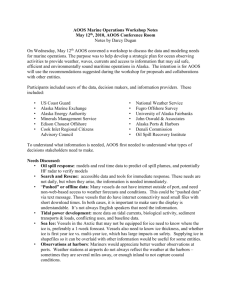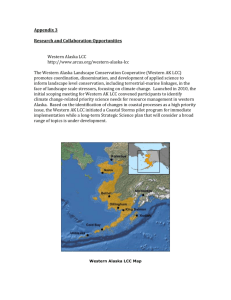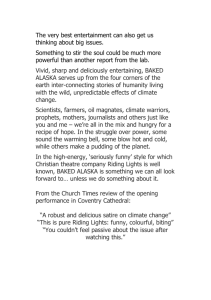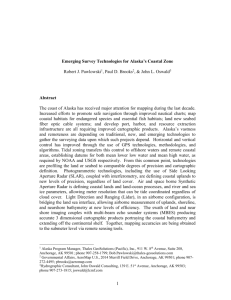Coastal Hazards Workshop Summary
advertisement
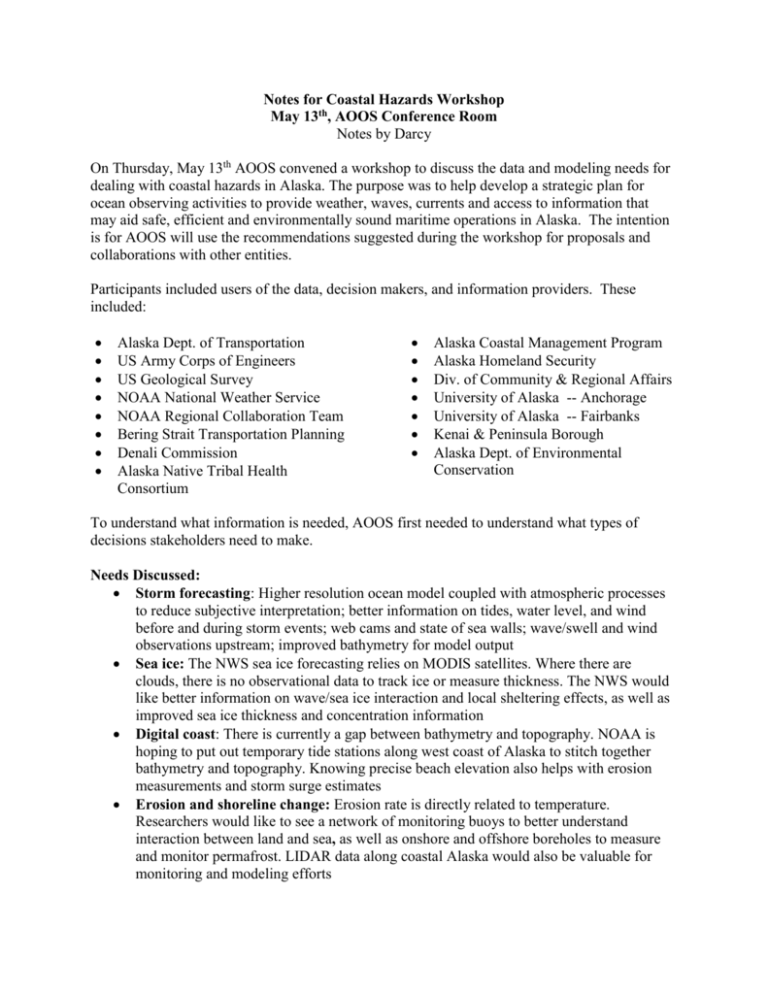
Notes for Coastal Hazards Workshop May 13th, AOOS Conference Room Notes by Darcy On Thursday, May 13th AOOS convened a workshop to discuss the data and modeling needs for dealing with coastal hazards in Alaska. The purpose was to help develop a strategic plan for ocean observing activities to provide weather, waves, currents and access to information that may aid safe, efficient and environmentally sound maritime operations in Alaska. The intention is for AOOS will use the recommendations suggested during the workshop for proposals and collaborations with other entities. Participants included users of the data, decision makers, and information providers. These included: Alaska Dept. of Transportation US Army Corps of Engineers US Geological Survey NOAA National Weather Service NOAA Regional Collaboration Team Bering Strait Transportation Planning Denali Commission Alaska Native Tribal Health Consortium Alaska Coastal Management Program Alaska Homeland Security Div. of Community & Regional Affairs University of Alaska -- Anchorage University of Alaska -- Fairbanks Kenai & Peninsula Borough Alaska Dept. of Environmental Conservation To understand what information is needed, AOOS first needed to understand what types of decisions stakeholders need to make. Needs Discussed: Storm forecasting: Higher resolution ocean model coupled with atmospheric processes to reduce subjective interpretation; better information on tides, water level, and wind before and during storm events; web cams and state of sea walls; wave/swell and wind observations upstream; improved bathymetry for model output Sea ice: The NWS sea ice forecasting relies on MODIS satellites. Where there are clouds, there is no observational data to track ice or measure thickness. The NWS would like better information on wave/sea ice interaction and local sheltering effects, as well as improved sea ice thickness and concentration information Digital coast: There is currently a gap between bathymetry and topography. NOAA is hoping to put out temporary tide stations along west coast of Alaska to stitch together bathymetry and topography. Knowing precise beach elevation also helps with erosion measurements and storm surge estimates Erosion and shoreline change: Erosion rate is directly related to temperature. Researchers would like to see a network of monitoring buoys to better understand interaction between land and sea, as well as onshore and offshore boreholes to measure and monitor permafrost. LIDAR data along coastal Alaska would also be valuable for monitoring and modeling efforts Shoreline Observations: managers, community residents, and scientists are all interested in shoreline observations including beach characteristics as well as waves and wind. Expansion of the Alaska Harbor Observing Network was discussed – both increasing the number of sites sending automated digital information, as well as setting up community networks of recorded human observations. Inundation: Inundation maps for communities in western and northern Alaska Evacuation needs: early warning system, especially for communities with limited evacuation routes Data Access: identify existing databases so that responders, managers, and researchers know where to go Recommendations: Data: Harbor Observations Wind, temperature, waves, water level Ice Extent and Thickness Shoreline Observations Digital shoreline Bathymetry DEMs Forecasts Storm surge/inundation Ice nowcast/forecast/trajectory Wave forecast/hindcast Data Access Tools Coastal hazards Portal Project Tracking System Other Items of Interest: IOOS and Sea Grant themes of focus are similar on a national scale NOAA determined there were 29 gaps in sea level monitoring in AK; 19 are on west coast and North Slope. NOAA is hoping to install 10-12 new sites in the next 5 years. NOAA is looking for comments on their Arctic plan (due June 25th)



